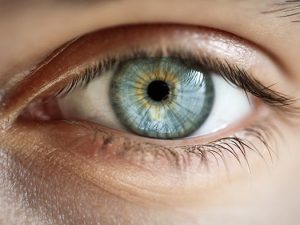The Apgar test, or Apgar test, is a neonatal health assessment test generally performed on babies just after birth, between the first and third minute of life.
In this sense, the score of this test is based on several evaluation components that, as we will see later, are designed to measure the general health of the newborn. Therefore, the main objective of this test is to help health professionals to determine if the baby, after the birth of her, requires intervention or medical assistance.
The truth is that this type of test is used in the vast majority of deliveries since, in addition to determining whether the baby needs assistance, it is also one of the most effective options when it comes to preventing infant mortality.
How is this test done?
When performing this test, it is essential to know that APGAR means: Appearance, Pulse, Irritability (Grimace in English), Activity and Breathing. These are precisely the values that the health professional will evaluate to determine the baby’s health status.
This test is administered at two separate time intervals after birth. The first is done just one minute after birth, and the second is done 5 minutes after birth. Thus, two scores are obtained.
However, sometimes if there is a concern for the baby’s health or a low score, this type of test can be done multiple times. In fact, in rare or critical cases, the test can be repeated up to ten minutes after birth. The latter usually happens when it comes to a premature delivery, a baby in need of resuscitation, or other children at higher risk of neonatal mortality.
Focusing again on each category, the score for this test is classified from 0 to 2, with the latter being the highest score. After ranking, the sum of each criterion is added to determine an overall score between 1 and 10:
Criteria to be assessed
Apgar test 3
Heart rate. According to pediatricians, this is the most critical evaluated parameter of the Apgar test. If the child does not have a heart rhythm, it is scored with 0; If he has less than 100 beats per minute, he corresponds to 1, and if he exceeds 100 during that same time interval, the score is 2.
Breathing. The respiratory effort denotes the maturity and health of the lungs. To do this, the movements of the chest are carefully observed when inhaling and exhaling. When the child is not breathing, 0 is placed; if his breathing is slow or irregular, he has 1 point; and if she has correct breathing or is crying, add 2 points.
Muscular tone. Here the strength of the movements and flexion of the newborn's limbs is considered. A baby has a good muscle tone when the limbs are flexed, and active movements are achieved, with a score of 2. Poor muscle tone is seen in cases of stretched and floppy limbs, which will score 0.
Reflexes. It is the involuntary reaction of the newborn to certain relatively annoying external stimuli. The irritability reflex (crying, grimacing, coughing, sneezing, or kicking) is mainly evaluated. In the absence of a response, 0 corresponds; If there are slight grimaces and gestures, score 1. In front of crying, coughing, or sneezing, score 2.
Skin color. This variable reflects the degree of oxygenation of the baby and varies according to the child's pigmentation. In children with black complexions, the color of the mucous membranes of the mouth, cornea, lips, palms of the hands, and soles of the feet is observed. If it is a baby with a fair complexion, the appearance of his skin in general and the contrast with the state of the feet and hands is considered.Providing the health of the newborn
During each Apgar test, the pediatrician assesses a series of characteristics. Each one is given a score from 0 to 2. The figure obtained provides a first knowledge of the newborn’s health and those aspects that must be taken care of so that it can lead a healthy life or, with the least amount of difficulties in health possible.
In the previous table, we have seen some of the newborn’s characteristics to establish one score or another. However, we are going to talk in more detail about each of them.
First of all, there is the appearance, which measures, mainly, the color of the baby. Thus, to give the maximum score, that is, 2, the baby’s entire body must be dyed pink without leaving any discolored or blue areas. At a score of 1, the newborn’s body has turned pink, but the hands and feet remain blue, and at a score of 0, the entire body is completely pale or blue, and no areas are flushed pink.
The healthcare professional uses a stethoscope to measure the pulse, which measures the newborn’s heart rate. It is precisely this part that is considered the most important in the Apgar test score.
To have a score of 2, the newborn’s pulse must be stable and sustain more than 100 beats per minute. At a score of 1, the newborn has a constant pulse, but it beats at less than 100 beats per minute, and finally, at a score of 0, the baby has no pulse, and the heart is not actively beating, requiring immediate attention. And urgent to generate this pulse.
As for irritability, it measures the baby’s response to stimulation. In this part of the test, the doctor may give the newborn a light pinch to see how he reacts.
Thus, for a score of 2, the baby has normal reflexes to physical stimulation and may respond by coughing, sneezing, or crying. On the other hand, for the one of 1, it responds to physical stimulation, but only when it is aggressive or forceful, while for the one of 0, there is no response to physical stimulation, and the reflexes are considered weak and weak.
Scores according to the Apgar test
The activity score measures the newborn’s muscle tone and her physical activity. To do this, the doctor extends his arms and legs and watches if he flexes or moves his muscles in response.
For a score of 2, the baby actively moves his arms and legs, and the muscles provide resistance to overextension, while for a score of 1, he gives a slight movement of the arms and legs but lacks entire movement.
At 0, there is no arm or leg activity, and he does not even attempt to move or flex his muscles when stimulated.
The last part of the test to be evaluated is breathing. For a score of 2, the baby breathes heavily in a regular rhythm, in addition to crying after delivery. In contrast, for the 0, she is not breathing at all and needs immediate medical attention to stimulate her respiratory system.
In “half” would be the one of 1, which is when he breathes in a slow, weak, or shallow way; in addition, he cannot or has difficulty crying.






























Add Comment